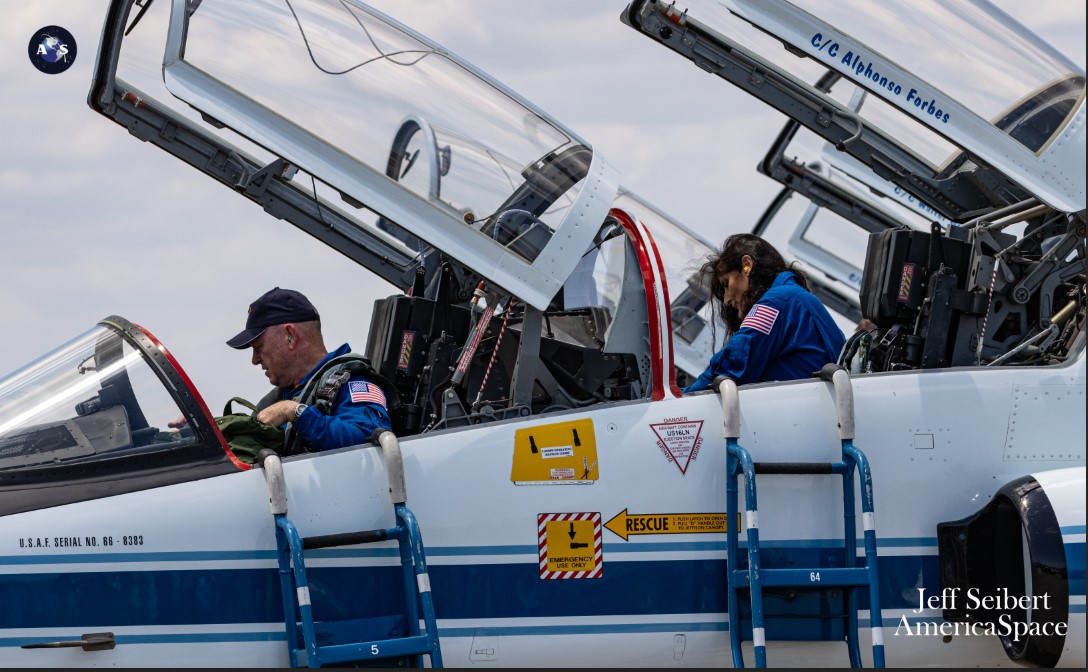
Veteran NASA astronauts Barry “Butch” Wilmore and Suni Williams arrived at the Launch and Landing Facility (LLF) at Florida’s Kennedy Space Center (KSC) on Thursday afternoon as efforts enter high gear for the first launch of humans aboard Boeing’s CST-100 Starliner spacecraft and the first crewed flight of an Atlas booster in over six decades. Wilmore and Williams, both retired Navy captains and each with two prior missions and almost 500 cumulative days in space, are targeting liftoff from storied Space Launch Complex (SLC)-41 at Cape Canaveral Space Force Station, Fla., no earlier than 10:34 p.m. EDT on 6 May for an approximately week-long visit to the International Space Station (ISS).
As outlined in an earlier AmericaSpace story, current plans call for Wilmore and Williams to spend up to ten Flight Days (FDs) aloft, with ISS Flight Director Vincent LaCourt having noted that their Crew Flight Test (CFT) mission objectives are attainable in a minimum of eight “docked” days at the ISS. According to the timeline, the astronauts will dock at the forward-facing port of the station’s Harmony node about 25 hours after launch to be welcomed aboard the sprawling orbital complex by incumbent Expedition 71 Commander Oleg Kononenko, fellow Russian cosmonauts Nikolai Chub and Aleksandr Grebenkin and NASA’s Matt Dominick, Mike Barratt, Jeanette Epps and Tracy Dyson.
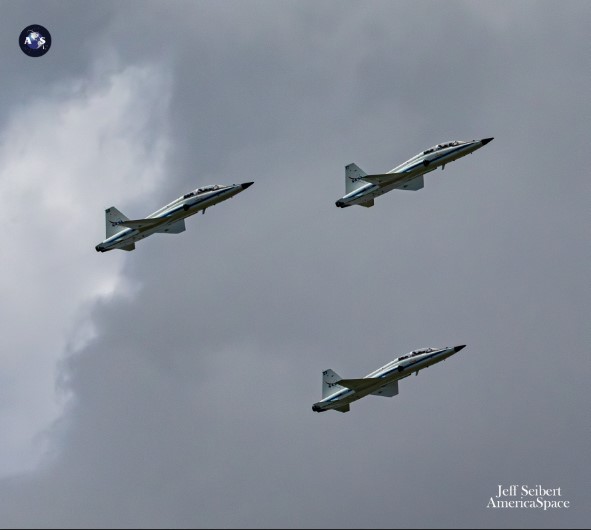
During their time aboard, Wilmore and Williams will perform emergency reviews, isolate themselves inside the Starliner to rehearse procedures for a contingency departure, test the short-notice power-up of systems, computers and their “Boeing Blue” launch and entry suits, perform piloting proficiency training and evaluate the general habitability of the new ship. As part of these habitability assessments, they will be joined by two members of Expedition 71 to simulate a full-size crew of four, which will become standard operating procedure beginning with next year’s long-duration flight of Starliner-1.
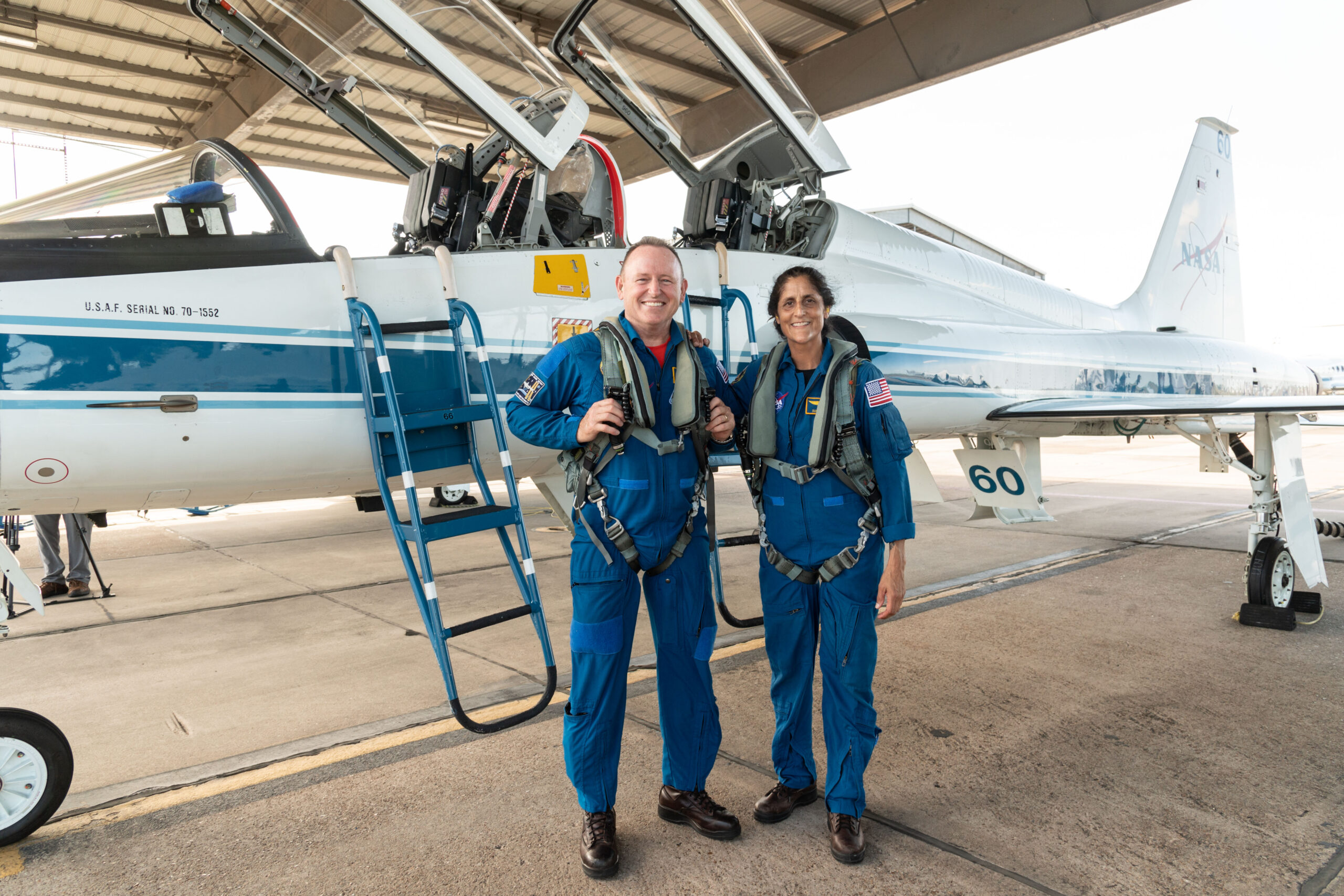
In early March, United Launch Alliance (ULA) completed the initial build-up of the Atlas V launch vehicle—the 106.5-foot-long (32.4-meter) Common Core Booster (CCB), a pair of Aerojet Rocketdyne-built AJ-60 solid-fueled boosters and the Dual-Engine Centaur (DEC) upper stage—for CFT inside the Vertical Integration Facility (VIF) at SLC-41. This will be the hundredth launch of an Atlas V since August 2002 and the first flight of a member of the Atlas rocket family with humans since the day-long Faith 7 mission by “Original Seven” Project Mercury astronaut Gordon Cooper, way back in May 1963.
On 16 April, Starliner itself was transported from the Commercial Crew and Cargo Processing Facility (C3PF) to SLC-41, where it was hoisted atop the Atlas V, topping-off the stack at 172 feet (52.4 meters) in height. And last Monday, Wilmore and Williams formally entered their pre-mission period of quarantine—properly termed “Flight Crew Health Stabilization”—before boarding a T-38 jet for the roughly two-hour flight from Ellington Field in Houston, Texas, to KSC on the Space Coast, earlier today.
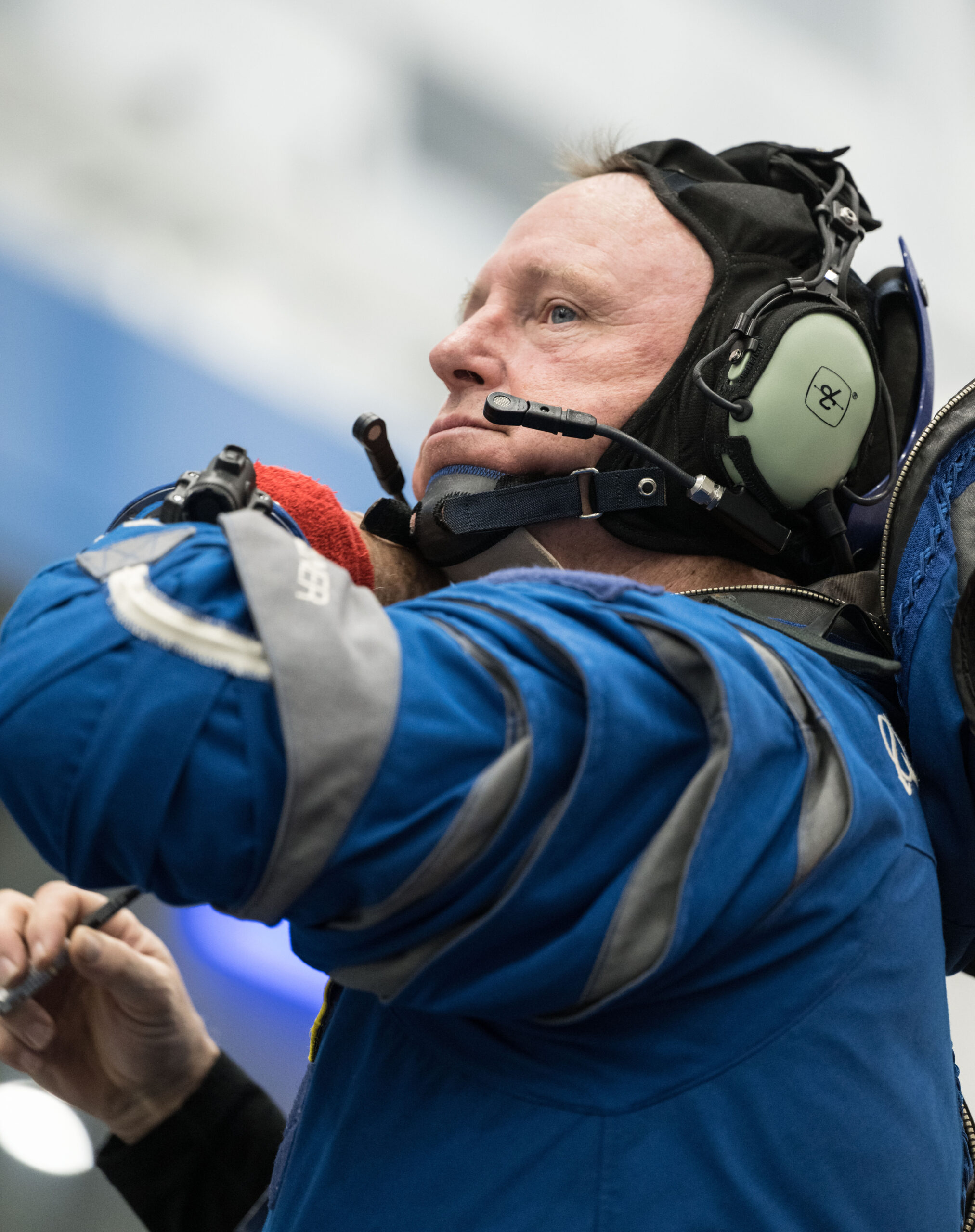
Sixty-one-year-old Wilmore and Williams, 58, will each be embarking on the third flights of their respective astronaut careers. “A test pilot’s dream,” Wilmore said of CFT.
Selected into NASA’s Astronaut Corps in July 2000, Wilmore served as pilot on shuttle Atlantis’ STS-129 mission in November 2009 and commanded Expedition 42 during a six-month increment between September 2014 and March 2015. Across those two flights he accrued 178 days in space and over 25 hours of spacewalking time across four lengthy sessions of Extravehicular Activity (EVA).
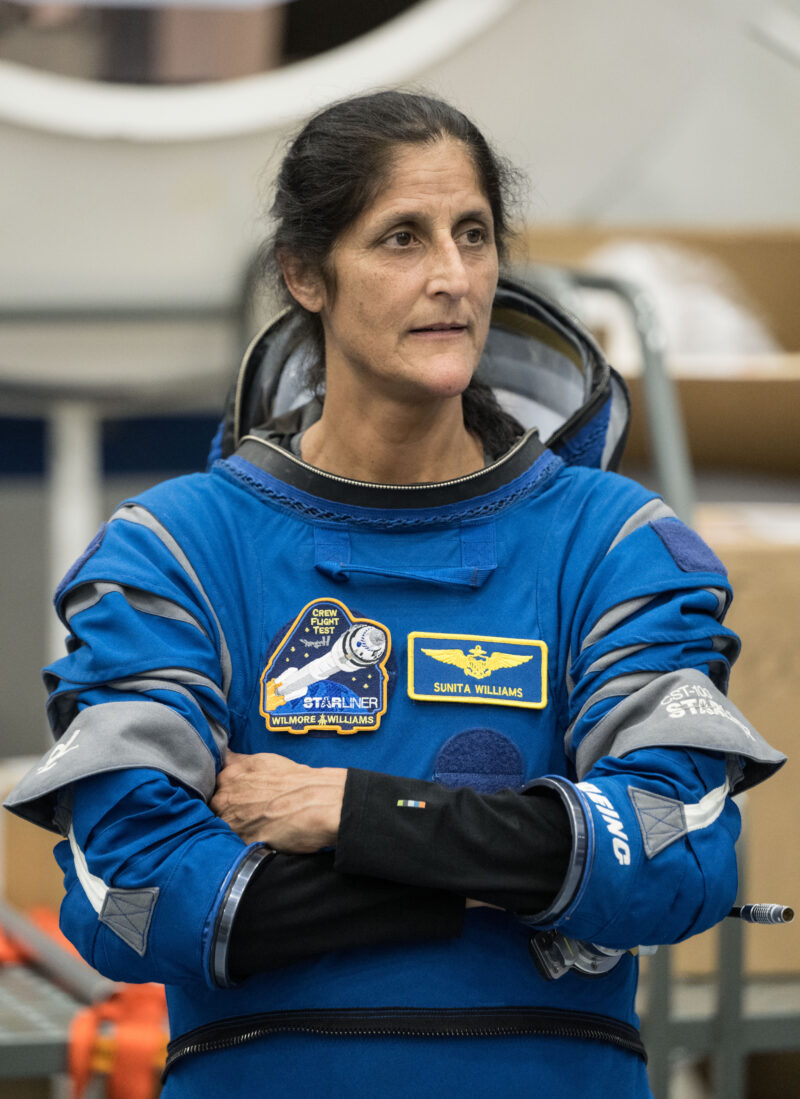
Williams, who entered the Astronaut Office in June 1998, has logged a pair of long-duration missions and in 2012 was the second woman to command the ISS. She first launched aboard shuttle Discovery on STS-116 in December 2006 and remained aboard the station for six months, returning aboard Atlantis on STS-117 the following June after 195 days, eclipsing fellow NASA astronaut Shannon Lucid for the longest single space mission ever undertaken by a woman.
She commanded Expedition 33 during a four-month ISS increment between July and November 2012 and returned to Earth after accruing nearly 322 days in space and seven EVAs totaling more than 50 hours. “We are the tip of the spear,” said Williams, paying tribute to an enormous team that stands behind the crew.
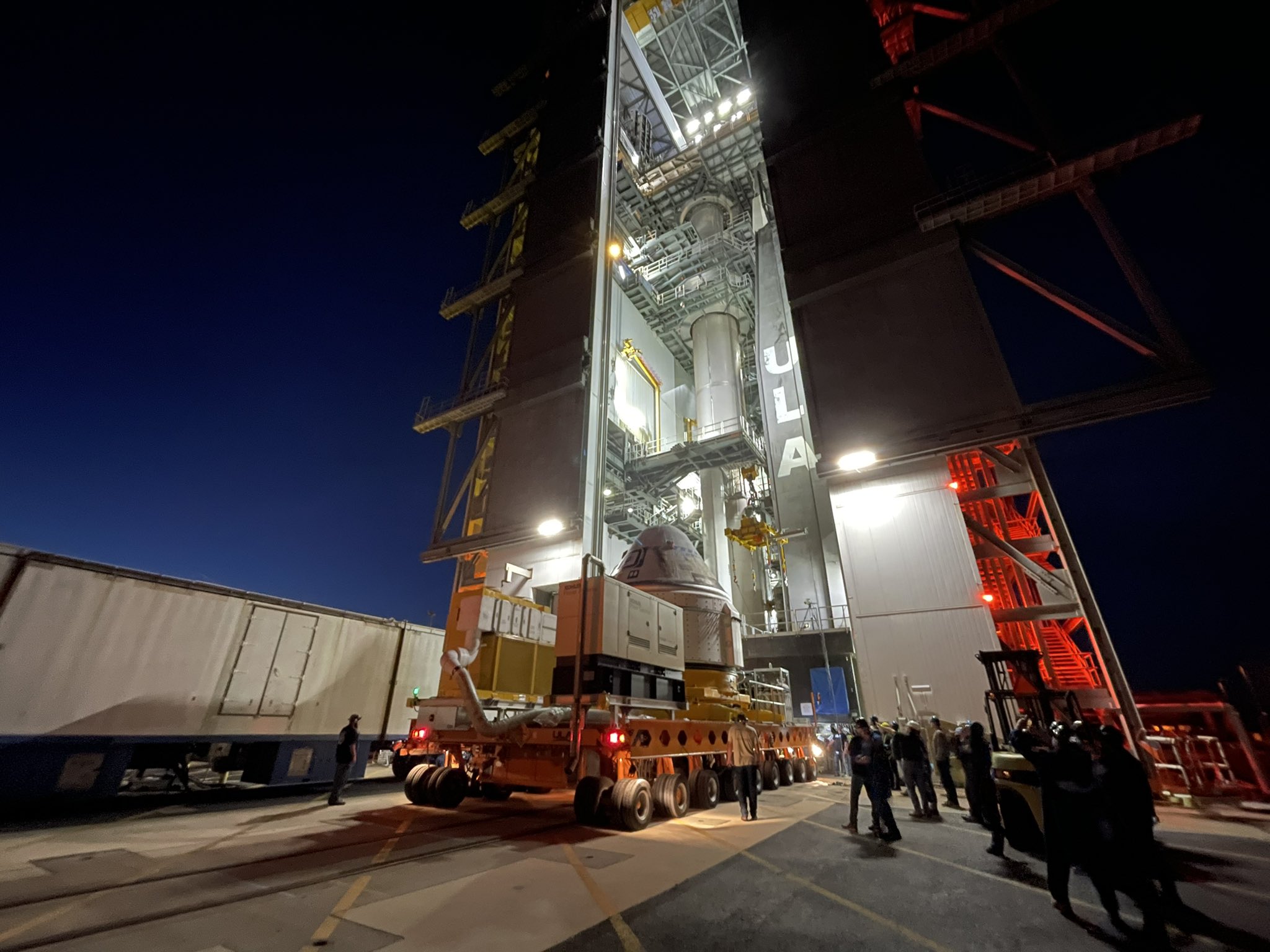
Arriving at the LLF and joined by fellow astronauts Mike Fincke—who is slated to pilot Starliner-1 next spring—and Jessica Wittner, Wilmore offered an ebullient enthusiasm for a complex mission. “When you do test, you expect to find things,” he said in response to a journalist’s question, citing their final launch simulation earlier this week.
In that “sim”, Wilmore and Williams weathered an Atlas V anomaly during ascent, which forced them to execute an abort to splash down near Shannon, off the west coast of Ireland. However, a guidance malfunction left them pointing in the wrong direction for Entry Interface and the crew were forced to transition to backup controls, still achieving an on-point splashdown within 700 feet (200 meters) of their intended point.
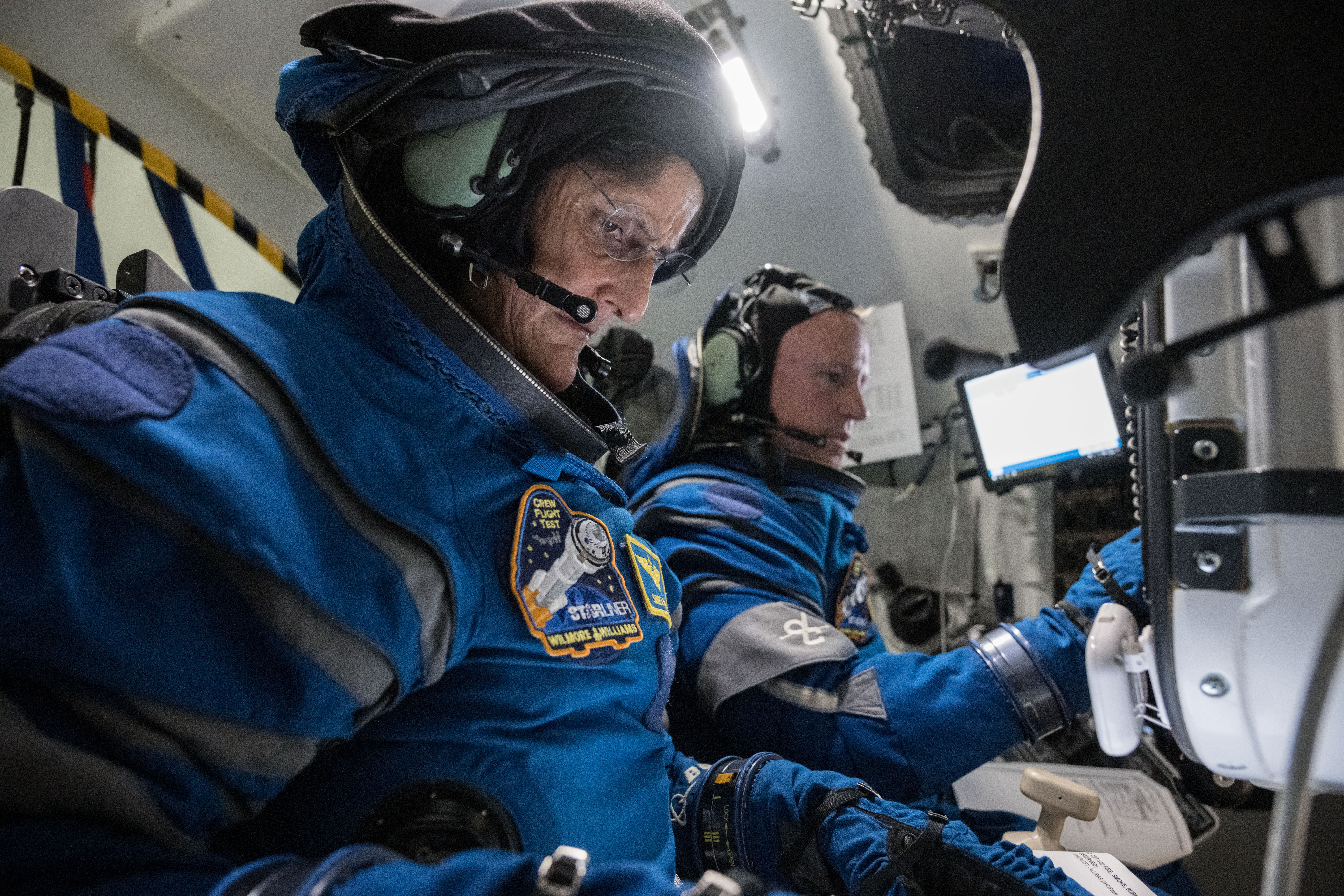
Even in backup mode, Wilmore explained, “there is no other spacecraft in the world that can do that”. Nor, he added, was he any less ready to fly ULA’s Atlas V, whose 99 flights between August 2002 and last October have seen it flawlessly deliver commercial geostationary communications satellites, classified payloads for the National Reconnaissance Office and U.S. Space Force and spacecraft to explore the Moon, Mars, the Sun, giant Jupiter, far-off Pluto and the asteroid Bennu.
“This is where the rubber meets the road,” said Williams, as she and Wilmore head into a week and a half of quarantine prior to launch. She added that she recently spoke to former NASA astronaut Bob Behnken—her counterpart on Demo-2, the crewed flight test of Dragon Endeavour—who advised her not to worry if their launch gets delayed a little. “May sixth isn’t magical,” she said, noting that Behnken’s flight also fell foul of a 24-hour scrub.
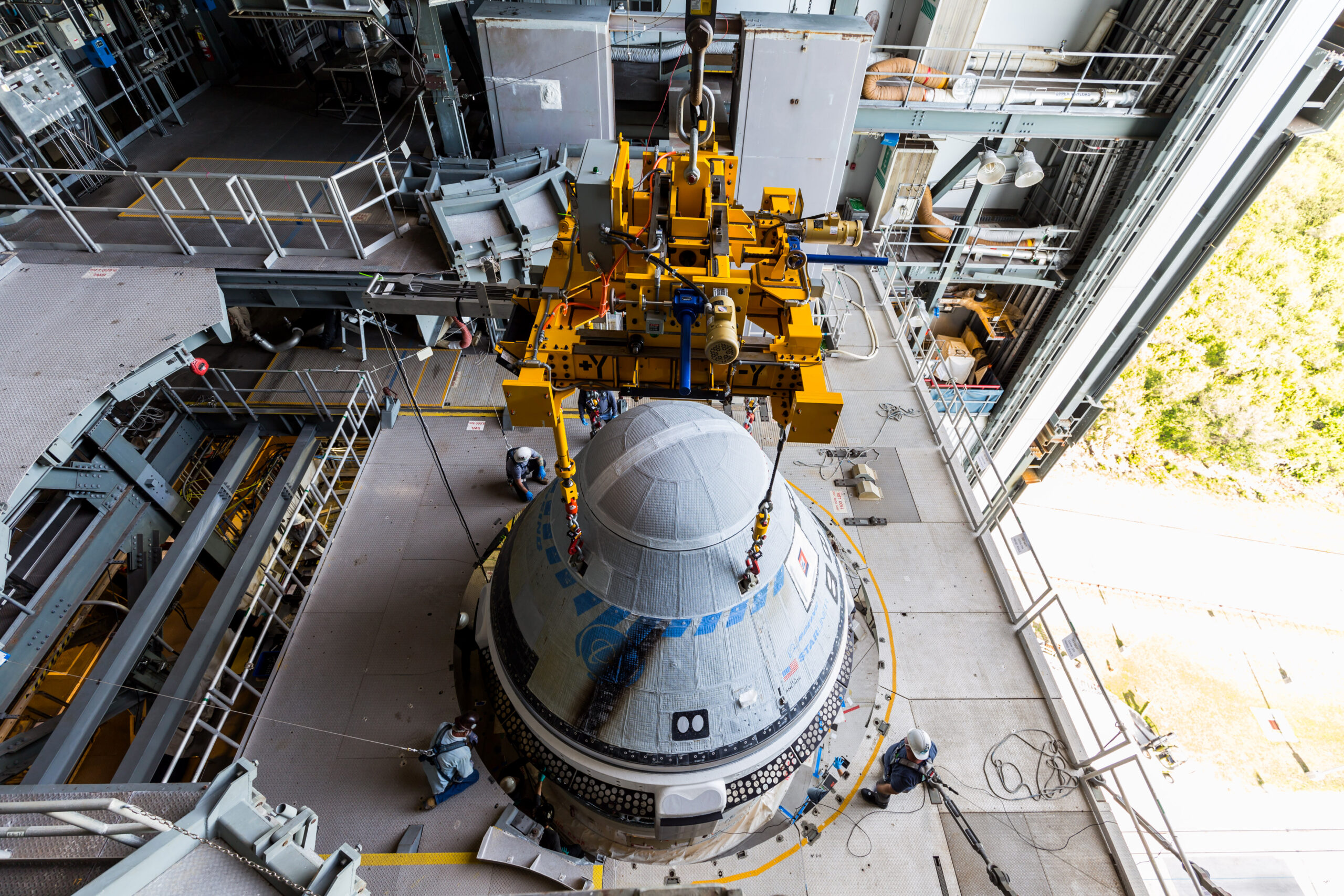
“Review, review, review, everything we’ve been working on,” said Wilmore, will be the focus over the next few days, together with an “ultimate” final meal, their options for which must be submitted by Friday. And for a former Navy test pilot, Wilmore has one movie in particular that he intends to watch in crew quarters: Top Gun: Maverick.




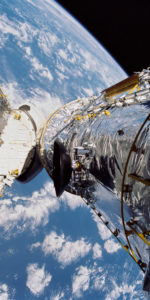
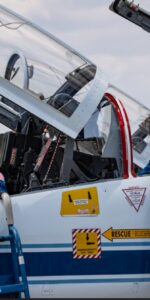
2 Comments
Leave a Reply2 Pings & Trackbacks
Pingback:Crew Flight Test (CFT) Targets Monday Launch, Ambitious Starliner Mission Ahead - AmericaSpace
Pingback:Crew Flight Test (CFT) Targets Monday Launch, Ambitious Starliner Mission Ahead - SPACERFIT